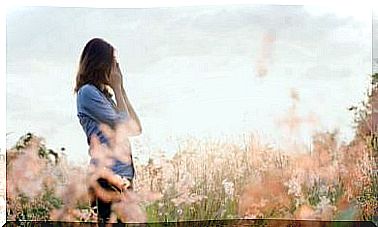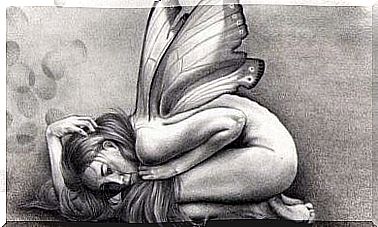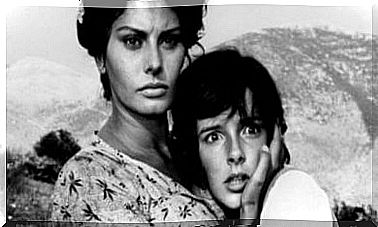The Myth Of Medusa And Persev: Art And Symbolism

For some, the myth of Medusa and Persev is a metaphor for atrocities, and how it is actually possible to save oneself from it through art. For others, however, it represents a feminine myth, in which abusing women is transformed into monsters. This image will no doubt both scare and amaze everyone in front of it.
There are several different versions of the myth of Medusa and Perseus. However, the classic version, perhaps the best known, says that both characters came from tragic backgrounds. Medusa was one of the three gorgons, the three daughters of Forkys and Keto. Of the three, Medusa was the most beautiful, and also the only one of them that was actually mortal. Her beauty inspired admiration from both gods and men.
Some say that her beauty was so great that Poseidon himself was so captivated that he raped her on the marble floor of the temple of Athena. Instead of helping the abused woman, Athena saw it as a violation of the temple. As a consequence, she decided to turn Medusa into a horrible monster, just as the sisters were. The goddess gave her metal hands and sharp fangs. Suddenly Medusa’s beautiful hair turned into living snakes.
In addition, she gave Medusa eyes that radiated a terrible light. From that moment on, everyone who saw her face would be turned to stone. Finally, she banned Medusa from the world of the living. Medusa was also pregnant. From the moment she arrived in the world, she was one of the most feared monsters.
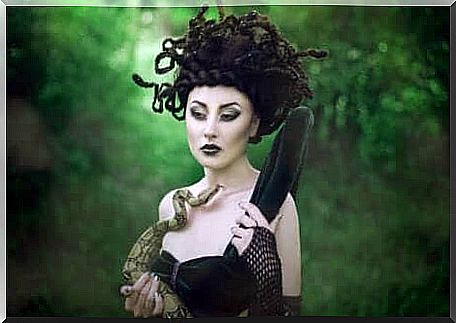
The origin of Persev
The myth of Medusa and Perseus tells that the king of Akrisos was told by an oracle that his daughter’s son would kill him. To prevent this prophecy from coming true, he locked his daughter Danaë in an airtight bronze chamber, which he placed deep in the earth. However, the god Zeus was in love with Danaë. He made her pregnant by turning into a gold shower, which penetrated the chamber she was trapped in.
Some time later, Perseus was born. His crying made his grandfather aware of what had happened. The king decided to lock Danaë and Persev in a wooden chest and throw them into the sea. However, they were rescued when they washed ashore on the island of Serifos. Persev grew up to be a beautiful young man, with a good heart and a desire to help. King Polydekte, who ruled the island, felt threatened and wanted to get rid of the young hero. He enticed Persev to make a promise to kill the mythical monster Medusa.
Athena, still carrying her hatred for the woman she had turned into a monster, offered to help Perseus. Hermes, the messenger of the gods, did the same. They guided him, and advised him to seek out the Graies. The Grays were three sisters who personified old age. They had prophetic abilities, and were also related to Medusa. The three sisters had one eye, which they all shared. In a moment of inattention, Persev managed to steal the eye. In exchange for returning their eye, they had to tell him the way to the Nymphs.
Perseus’ powers
The myth of Medusa and Persev tells that when the brave young man finally came to the Nymphs, they gave him sandals with wings so that he could fly through the air. They also handed him Hades’ helmet. The helmet was made of leather from dogs, and made the person wearing it invisible. Finally, they gave him a saddlebag. In addition, Hermes gave him a razor-sharp sickle, while Athena let him take her mirror-shiny shield.
Persevs was now equipped and ready to look for the gorgons. On the way he found several statues of stone. These statues were, of course, those who had visited the site and ended up meeting the gaze of Medusa. Persevs understood that he had to be very careful not to end up like the other statues. He decided to be patient and to wait for the right moment.
As the gorgons fell asleep, Persev placed the shining shield in a strategic position so that Medusa’s face would be reflected in the shield. That way he could avoid seeing her in the face and thus meet her gaze. When she finally showed up, Perseus took a good grip on the sickle and beheaded Medusa with a single cut. Out of her headless body came the winged horse Pegasos and the giant Khrysaor. They were the children she was carrying.
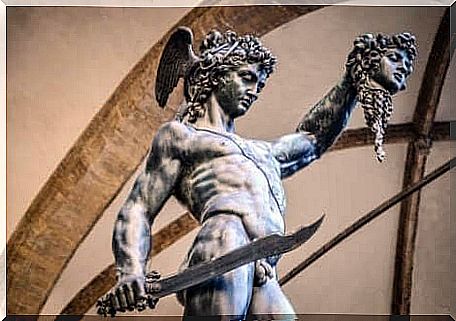
The myth of Medusa and Persev, an important story
The myth of Medusa and Perseus further tells that the young hero used Medusa’s head to defeat his enemies. Perhaps surprisingly, after all, the head did not lose the power it had had while Medusa was alive. He placed it in the anointing bag he had taken with him, and thanks to this weapon he was able to defeat monsters and enemies.
It is said that the myth of Medusa and Perseus is related to art in a symbolic way. Specifically, Persev’s shield represents a way to meet what one fears in an indirect way. Something that art also does: art reflects. Art can let us see the fear in white, but at the same time it prevents us from being totally paralyzed by the fear we may experience.
In the same way, Medusa’s head becomes Persev’s most important and powerful weapon. This can also be interpreted in a symbolic way. It is with art that we can manage to face the demons and the evil things we carry with us inside. Medusa’s head will thus be the work, the result and the product of creation.
